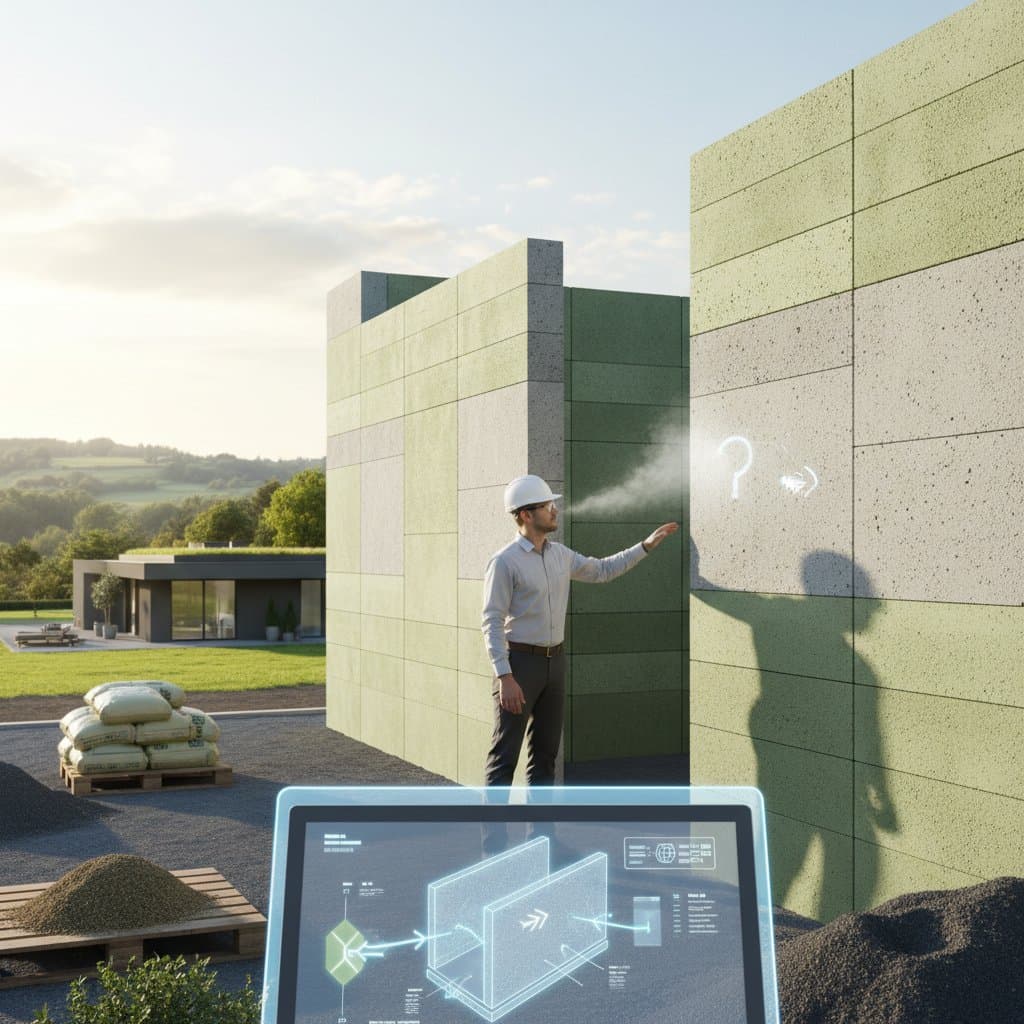Sustainable Building Materials: Hempcrete and Ashcrete in Modern Construction
Picture entering a home where the walls maintain a comfortable temperature year-round and the air quality remains fresh without constant mechanical intervention. These qualities arise from innovative materials such as hempcrete and ashcrete, which replace traditional concrete in ways that enhance both occupant comfort and environmental health. Builders increasingly select these options to create structures that align with sustainable principles while delivering reliable performance.
Challenges of Traditional Concrete
Concrete dominates construction due to its strength, versatility, and cost-effectiveness. However, the production process generates substantial carbon dioxide emissions, primarily from heating limestone to produce cement. This environmental impact accumulates rapidly in large-scale projects like foundations, roads, and buildings, prompting a shift toward lower-emission alternatives.
Hempcrete and ashcrete address these issues by utilizing renewable or recycled resources. They reduce the demand for virgin materials and minimize waste, allowing builders to maintain structural integrity with a lighter ecological footprint.
Understanding Hempcrete
Hempcrete consists of hemp hurds, the inner woody core of the hemp plant, combined with a lime-based binder and water. This mixture forms a lightweight, porous material suitable for non-structural applications such as wall infill, insulation panels, and plaster bases. Upon curing, it provides excellent thermal and acoustic insulation while allowing vapor to pass through, which prevents moisture buildup and mold growth.
The material's natural composition also deters pests and offers inherent fire resistance. In practice, hempcrete walls contribute to energy-efficient homes by stabilizing indoor humidity levels, often reducing reliance on heating and cooling systems by up to 20 percent in moderate climates.
Exploring Ashcrete
Ashcrete incorporates fly ash, a fine residue from coal-fired power plants, mixed with lime and aggregates to mimic conventional concrete properties. This approach repurposes industrial byproducts that might otherwise require landfill disposal, thereby conserving resources and lowering emissions associated with cement manufacturing.
The resulting material achieves compressive strengths comparable to standard concrete, making it viable for slabs, foundations, and pavements. Ashcrete sets more quickly than hempcrete and integrates seamlessly with existing construction equipment, facilitating adoption in both residential and commercial projects.
Benefits for Builders and Occupants
Beyond environmental advantages, these materials enhance living spaces. Hempcrete's breathable nature creates interiors with consistent temperatures and humidity, leading to improved air quality and occupant well-being. Reports from early adopters indicate reduced energy bills and fewer instances of seasonal allergies due to the material's ability to filter airborne particles.
Ashcrete provides durability in high-traffic areas while emitting less heat during curing, which simplifies on-site operations. Contractors appreciate its workability, as it pours and finishes similarly to traditional mixes, yet it requires less water and generates fewer pollutants.
Implementing Hempcrete in Projects
To incorporate hempcrete effectively, start by assessing the site's structural needs. Reserve it for infill panels between timber frames or as a retrofit insulation layer in existing walls. Source hemp hurds from certified agricultural suppliers to ensure quality and sustainability.
Preparation involves spraying or tamping the wet mix into forms, followed by a curing period of 28 days or more under protected conditions. Monitor moisture levels during this phase to achieve optimal density, typically around 300-500 kilograms per cubic meter.
Implementing Ashcrete in Projects
For ashcrete, consult local regulations on fly ash sourcing to verify compliance with purity standards. Mix ratios generally include 20-30 percent fly ash by weight, blended with Portland cement substitutes and fine aggregates for enhanced workability.
Pour the mixture using standard concrete pumps or wheelbarrows, then vibrate to eliminate air pockets. Curing requires seven to 14 days of moist coverage, after which the surface can support loads similar to those of ordinary concrete.
Cost and Performance Analysis
Initial costs for hempcrete may exceed those of fiberglass insulation by 10-20 percent per square foot, depending on regional hemp availability. However, long-term savings from reduced energy use often offset this premium within five years. Ashcrete pricing aligns closely with conventional concrete, particularly where fly ash supplies are abundant, potentially lowering expenses by 15 percent through waste diversion.
Both materials demonstrate longevity with minimal upkeep. Hempcrete's flexibility absorbs minor settlements without cracking, and its lime content provides self-healing properties against small fissures. Ashcrete withstands freeze-thaw cycles effectively, though periodic sealing in exposed applications extends surface life.
Design Integration Tips
Hempcrete's textured finish complements rustic or minimalist aesthetics, pairing well with exposed timber or lime-washed accents. Apply breathable paints or plasters to preserve its vapor-permeable qualities, avoiding synthetic barriers that could trap moisture.
Ashcrete suits contemporary designs with its clean lines and customizable pigmentation. Polish or stamp the surface for decorative effects in indoor floors or outdoor walkways, ensuring compatibility with non-toxic sealants for indoor air safety.
Sourcing Materials and Professional Support
Identify suppliers through agricultural cooperatives for hemp-based products or industrial recycling firms for fly ash. Opt for pre-blended kits from reputable manufacturers to simplify mixing for novice users.
Engage certified installers familiar with these materials; workshops offered by green building associations can provide hands-on training. Local sourcing reduces transport-related emissions and fosters community-based supply chains.
Experiencing the Results
Completed projects reveal subtle yet profound improvements. Hempcrete enclosures maintain steady indoor climates, minimizing drafts and promoting restful environments. Ashcrete elements add a neutral, earthy tone that enhances natural lighting in spaces.
Over time, occupants report heightened satisfaction with the tactile and sensory qualities of these builds. The integration of such materials not only sustains the planet but elevates daily living.
Steps to Adopt These Materials
Begin with feasibility studies for your project scale, consulting architects versed in bio-based construction. Prototype small sections to test compatibility with your design vision. Scale up confidently, knowing these choices support resilient, low-impact architecture.
